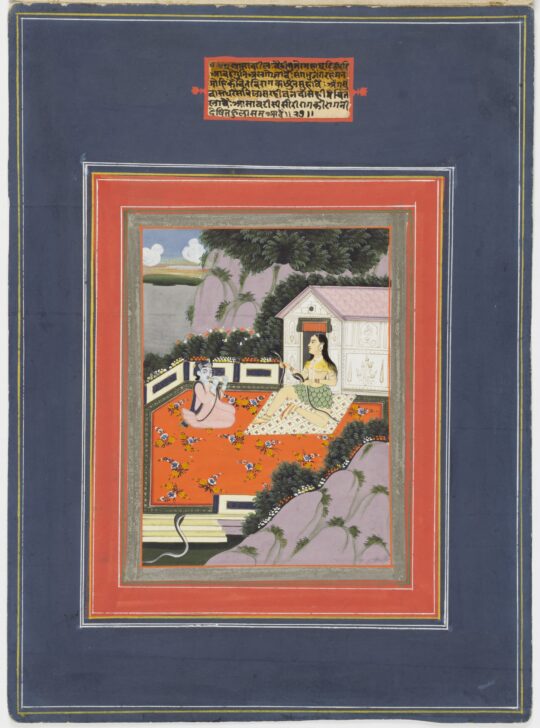Ragamala: Asavari Ragini
Artist Unknown, India, Rajasthan, Jaipur School

Description
Subject Matter:
Ragamala paintings draw from aspects of human experience in order to visualize specific moods, emotions, and qualities such as love, anguish, valor, weakness, and strength. A raga in Indian music is a melody consisting of a string of notes in a particular arrangement. Raginis are derivations from or variations of ragas in feminine mode (the basis of these classifications remains unexplained in many cases), and could have different or similar musical structures as ragas. Specific ragas are associated with specific times of the day, seasons, and emotions. When visualized, as here, ragas and raginis are meant to evoke the same affective responses that are allied to their musical modes. The text above the illustration refers to stories or incidents associated with the depicted raga/ ragini, but may not necessarily be narrative-like or descriptive. Drawn from literary tropes and tales that sophisticated writers and viewers would be aware of, the inscriptions are an integral part of the overall experience of this miniature painting. An illiterate viewer, however, could still enjoy the scene without reading the text.
Asavari is a quiet ragini, performed in the morning. She is visualized as a woman in a skirt made of leaves, charming snakes in the forest. An attendant is shown playing the flute. In some representations, Asavari herself plays the flute too. The snakes are shown writhing in her hands, and one is even gradually approaching the scene. The forest association suggests that Asavari not only lives in this setting, but could also be a yogini (holy woman). The snakes, who seem to be enjoying her charms, are testimony to Asavari's knowledge, which leads to wisdom and Release.
Physical Description:
A woman sits on a pavilion, snakes surrond her. She holds some of them in her hand. A blue-bodied man sits beside her, playing an instrument. A rocky outgrowth takes over the foreground, and a pavilion is placed behind the female. It is daytime. A short verse is painted above the depicted scene.
Usage Rights:
If you are interested in using an image for a publication, please visit https://umma.umich.edu/request-image/ for more information and to fill out the online Image Rights and Reproductions Request Form.